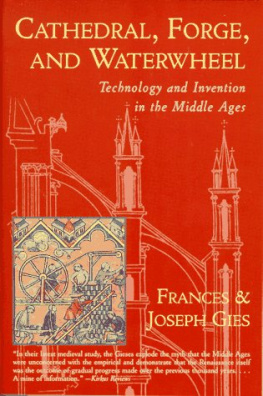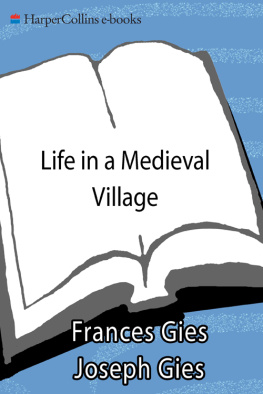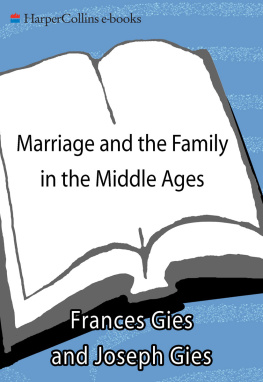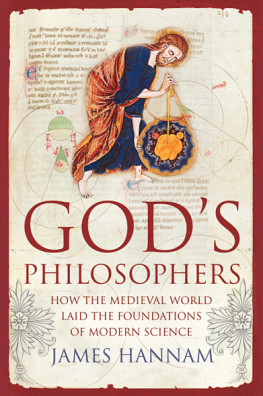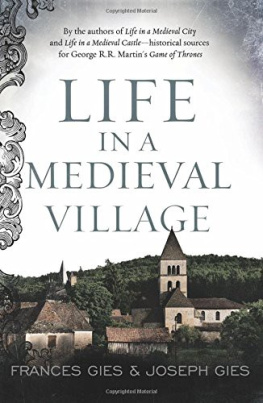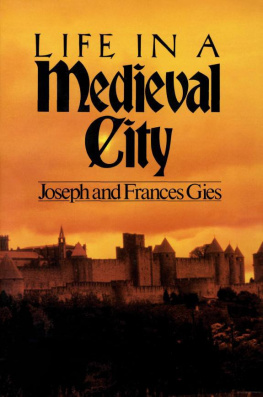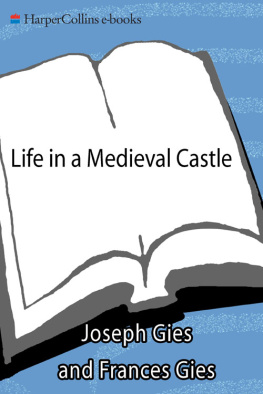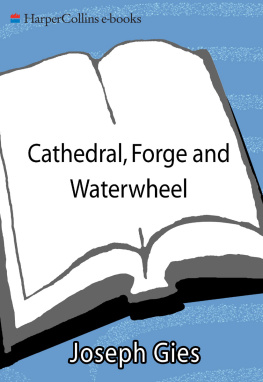N IMRODS T OWER , N OAHS A RK
I N THE CENTURIES FOLLOWING THE MIDDLE Ages, thinkers of the European Enlightenment looked back on the previous period as a time quiet as the dark of the night,1 when the world slumbered and mans history came to a full stop.2 A spirit of otherworldliness and a preoccupation with theology were perceived as underlying a vast medieval inertia. The most influential spokesman for this point of view was historian Edward Gibbon, who in his Decline and Fall of the Roman Empire described medieval society as the triumph of barbarism and religion.3
Images of lethargy and stagnation were persistently applied to the Middle Ages well into the twentieth century. Even today the popular impression remains to a great extent that of a millennium of darkness, a thousand years when nothing happened. To the average educated person, the most surprising news about medieval technology may be the fact that there was any.
Yet not all intellectuals of the past shared the negative view of the Middle Ages. In 1550 Italian physician and mathematician Jerome Cardan wrote that the magnetic compass, printing, and gunpowder were three inventions to which the whole of antiquity has nothing equal to show.4 A generation later, the Dutch scholar Johannes Stradanus (Jan van der Straet, 15281605) in his book Nova reperta listed nine great discoveries, all products of the Middle Ages.5
Gibbons eighteenth-century contemporary Anne-Robert-Jacques Turgot, finance minister to Louis XVI, looked back on the Middle Ages as a time when kings were without authority, nobles without constraint, peoples enslavedcommerce and communication cut off, when the barbarian invasions had put out the fire of reason, but he saw it also as a time when a number of inventions unknown to the Greeks and Romans had been somehow produced. Turgot credited the medieval achievement to a succession of physical experiments undertaken by unknown individual geniuses who worked in isolation, surrounded by a sea of darkness.6
Today, on the contrary, the innovative technology of the Middle Ages appears as the silent contribution of many hands and minds working together. The most momentous changes are now understood not as single, explicit inventions but as gradual, imperceptible revolutionsin agriculture, in water and wind power, in building construction, in textile manufacture, in communications, in metallurgy, in weaponrytaking place through incremental improvements, large or small, in tools, techniques, and the organization of work. This new view is part of a broader change in historical theory that has come to perceive technological innovation in all ages as primarily a social process rather than a disconnected series of individual initiatives.
In the course of recent decades, the very expression Dark Ages has fallen into disrepute among historians. The 1934 Websters asserted that the term Dark Ages is applied to the whole, or more often to the earlier part of the [medieval] period, because of its intellectual stagnation. The 1966 Random House dictionary agreed, defining Dark Ages as 1. The period in European history from about A.D. 476 to about 1000; 2. The whole of the Middle Ages, from about A.D. 476 to the Renaissance, a description repeated verbatim in its 1987 edition. The HarperCollins dictionary of 1991, however, recognized the terms decline in scholarly favor, defining Dark Ages as 1. The period from about the late 5th century A.D. to about 1000 A.D. , once considered an unenlightened period; 2. (occasionally) the whole medieval period.
Recently, historians have suggested the possibility of a narrower use of the old term. In a presidential address to the Medieval Academy of America in 1984, Fred C. Robinson recommended keeping Dark Age, in the singular, and restricting its meaning to our dim perception of the period (owing to the scarcity of documentary evidence) rather than to its alleged intellectual stagnation.7
The problem of definition also involves the dating of the Middle Ages. The once sovereign date of A.D. 476 as starting point has been judged essentially meaningless, since it marks only the formal abdication of the last Western Roman emperor. In fact, the now general employment of the round A.D. 500 is an admission by historians that there is really no valid starting point, that the beginning of the Middle Ages overlaps and intermingles with the decline and fall of the Western Roman Empire. At the other end, the precise but even less meaningful 1453 (the fall of Constantinople and the end of the Hundred Years War) has been widely replaced by the round 1500, suggestive principally of the opening of the Age of Exploration and the historic impingement of Europe upon America and Asia.
From the third decade of the present century, a recognition of medieval technological and scientific progress has been affirmed by scholars such as Marc Bloch, Lynn White, Robert S. Lopez, Bertrand Gille, Georges Duby, and Jacques Le Goff. Most modern textbooks include in their history of invention the medieval discovery or adoption of the heavy plow, animal harness, open-field agriculture, the castle, water-powered machinery, the putting-out system, Gothic architecture, Hindu-Arabic numerals, double-entry bookkeeping, the blast furnace, the compass, eyeglasses, the lateen sail, clockwork, firearms, and movable type.
But while the pioneering work in medieval technology by Marc Bloch and Lynn White was undertaken in an era (roughly 1925 to 1960) that affirmed human progress and regarded advances in technology as self-evidently positive, the climate of the last part of the twentieth century has become less favorable to technology in general and even to the idea of progress. Suddenly, instead of being credited with no technology, the Middle Ages is found by some to have had too much. Activities once universally regarded as beneficent (such as the land-clearance campaigns of the great monasteries) have been condemned: The deforestation of Europe during the twelfth centuryespecially during the 1170s and 1180smay be seen as the first great ecological disaster, wrote George Ovitt, Jr., in 1987.8
Such present-minded thinking permeated Jean Gimpels The Medieval Machine (1976). Drawing a parallel with twentieth-century industrial society, which he envisioned in Spenglerian decline, Gimpel pictured an overindustrialized late medieval Europe suffering from overpopulation, pollution, economic instability, dwindling energy sources, and general malaise.9
But despite the many medieval contributions to technology, to speak as Gimpel does of an industrial revolution of the Middle Ages is hyperbole. By the same token, pollution was slight, energy sources were largely untapped, the financial crisis of the fourteenth century was temporary and local, and population was excessive only in respect to the limitations of existing agricultural technology. Advanced though it was over the classical age, medieval technology was still in what Lewis Mumford called the eotechnic phasethe age of wood, stone, wind, and waterto be followed, in Mumfords terminology, by a paleotechnic phase in which coal and iron dominated, and finally by our present neotechnic phase of electricity, electronics, nuclear energy, alloys, plastics, and synthetics.10
When Gibbon indicted the Middle Ages as the triumph of barbarism and religion, he coupled the two great bugbears of the intellectual elite of his day, both widely regarded as hostile to scientific and technical progress. The Catholic Church long stood condemned as the enemy of enlightenment, with the alleged suppressions of Copernicus and Galileo as Exhibit A. More recent historians, however, have pointed to evidence of Church attitudes and policies of a quite different coloration. Lynn White asserted that Christian theology actually gave the Middle Ages a fiat for technology: Man shares in great measure Gods transcendence of nature. Christianity, in absolute contrast to ancient paganism and Asias religionsnot only established a dualism of man and nature but also insisted that it is Gods will that man exploit nature for his proper ends.11

